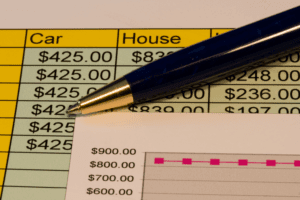
It is possible to determine a company’s shareholders’ equity by deducting its total liabilities from its total assets, both of which are listed on the balance sheet. In the absence of a balance sheet, the shareholder’s equity can be determined by adding up all assets and deducting all liabilities to get the shareholder’s equity. Add the current obligations, such as accounts payable and short-term debts, and the long-term liabilities, such as bonds payable and notes, to arrive at the total liabilities for this equity formula. When a company’s shareholder equity ratio is at 100%, it means that the company has all of its assets funded with equity capital instead of debt. This could happen because the company is generating strong earnings that paid debt over time and constituted more equity for the shareholders. To find stockholders’ equity, you simply subtract the company’s total liabilities from its total assets.
- Finally, the number of shares outstanding refers to shares that are owned only by outside investors, while shares owned by the issuing corporation are called treasury shares.
- Retained earnings represent the cumulative net income of a corporation that has been retained rather than distributed to shareholders as dividends.
- A sustainable and increasing ROE over time can mean a company is good at generating shareholder value because it knows how to reinvest its earnings wisely, so as to increase productivity and profits.
- Understanding the equity equation is critical from an investor’s point of view.
- It represents the residual interest in the assets of a company after deducting liabilities.
What Is a Liability in the Accounting Equation?

A sustainable and increasing ROE over time can mean a company is good at generating shareholder value because it knows how to reinvest its earnings wisely, so as to increase productivity and profits. In contrast, a declining ROE can mean that management is making poor decisions on reinvesting capital in unproductive assets. With various debt and equity instruments in mind, we can apply this knowledge to our own personal investment decisions. Although many investment decisions depend on the level of risk we want to undertake, we cannot neglect all the key components covered above. Bonds are contractual liabilities where annual payments are guaranteed unless the issuer defaults, while dividend payments from owning shares are discretionary and not fixed. You may compute a number of shareholders’ equity ratios using the total value of shareholders’ equity, including the debt-to-equity ratio, return on equity, and book value of equity per share.
- Total equity (book value) might be equivalent to total shareholder equity on a company’s balance sheet if you look at it from the standpoint of book value.
- In events of liquidation, equity holders are last in line behind debt holders to receive any payments.
- If used in conjunction with other tools and metrics, an investor can accurately analyze the health of an organization.
- Shares bought back by companies become treasury shares, and the dollar value is noted in an account called treasury stock, a contra account to the accounts of investor capital and retained earnings.
- A company’s equity position can be found on its balance sheet, where there is an entry line for total equity on the right side of the table.
- By subtracting the company’s obligations from its assets for that fiscal year, the shareholders equity will be determined.
Understanding Restricted Cash and Its Impact on Financial Strategy

This helps investors decide whether to buy, sell, or hold onto a stock for Cash Flow Management for Small Businesses the long term, looking beyond immediate market changes. Understanding shareholders’ equity is key to assessing a company’s financial strength and value. This will boost the total capital invested and improve the company’s financial strength for its shareholders.
- In contrast, a declining ROE can mean that management is making poor decisions on reinvesting capital in unproductive assets.
- Stockholders’ equity is the amount of the company that is “owned” by investors.
- DuPont analysis is covered in detail in CFI’s Financial Analysis Fundamentals Course.
- With various debt and equity instruments in mind, we can apply this knowledge to our own personal investment decisions.
- In 2018, Company PQR’s total assets would be $17.8 million, while its accrued liabilities would be $5.6 million.
- David is comprehensively experienced in many facets of financial and legal research and publishing.
Positive vs. Negative Shareholder Equity
It’s the amount that would remain if the company liquidated all its assets and paid off all its debts. Assets represent the valuable resources controlled by a company and liabilities represent its obligations. Both liabilities and shareholders’ equity detail how the assets of a company are financed. It will show as a liability if it’s financed through debt but in shareholders’ equity if it’s financed through issuing equity shares to investors. Liabilities are obligations that the company owes to external parties, such as loans, accounts payable, and accrued expenses. Equity represents the residual claim on assets after satisfying liabilities.

The fundamental accounting equation is assets equalling the sum of liabilities and equity. This equation is the basis for the balance sheet, which summarizes a company’s financial position at a specific point in time. In all of the examples we’ve discussed in this article, the basis of calculating that equity was rooted in this accounting equation. Equity can be found on a company’s balance sheet and is one of the most common pieces of data employed by analysts to assess a company’s financial health. Let us consider an example to compute the total equity for a company called ABC Limited.


Understanding the shareholder’s equity formula is crucial from the perspective of an investor since it shows the true worth of the shareholders investment in the company. A line item for the shareholder’s equity can be found in the balance sheet of a business or enterprise. The company’s shareholder’s typically care about the company’s profits and are interested in their equity. A shareholder’s acquisition of firm stock over time also results in capital gains for them and grants them the ability to vote in board of directors elections.
Accumulated other comprehensive income
It can be defined as the total number of dollars that a company would have left if it liquidated all its assets and paid off all of its liabilities. The shareholders’ equity is the remaining amount of assets available to shareholders after the debts and other liabilities have been paid. The stockholders’ equity subtotal is located in the bottom half of the balance sheet. What remains after deducting total liabilities from the total assets is the value that shareholders would get if the assets were liquidated and all debts were paid up.
Investors often integrate this metric into their portfolio strategy, using it to identify companies with a solid financial foundation and a track record of maintaining or increasing equity. This can be particularly appealing for value investors who look for opportunities to buy stocks at prices that are below their intrinsic values, as suggested by strong equity positions. For instance, a company with a large average total equity relative to its market capitalization may be undervalued, suggesting a potential investment opportunity. Using the return on equity ratio, equity investors can determine the return the company made on their equity investment (ROE). In essence, a company’s how to find stockholders equity net income is divided by the equity of its shareholders to calculate its return on equity.
Negative or Positive
It is also utilized by third parties like lenders who want to know if the business is performing its debt obligations and maintaining minimum equity levels. At that time, XYZ Ltd. had $7 billion in total shareholders’ equity (or assets minus liabilities). While long-term assets are less liquid, retained by the company for at least a year, or cannot be converted to cash within a year, current assets are liquid and can be payroll converted to cash within the year. The last period’s ending number is the same as this period’s beginning number. In some cases, a company’s financial statements may include a table called the reconciliation of stockholders’ equity. In that case, the beginning stockholders’ equity will be listed at the beginning of that table.

